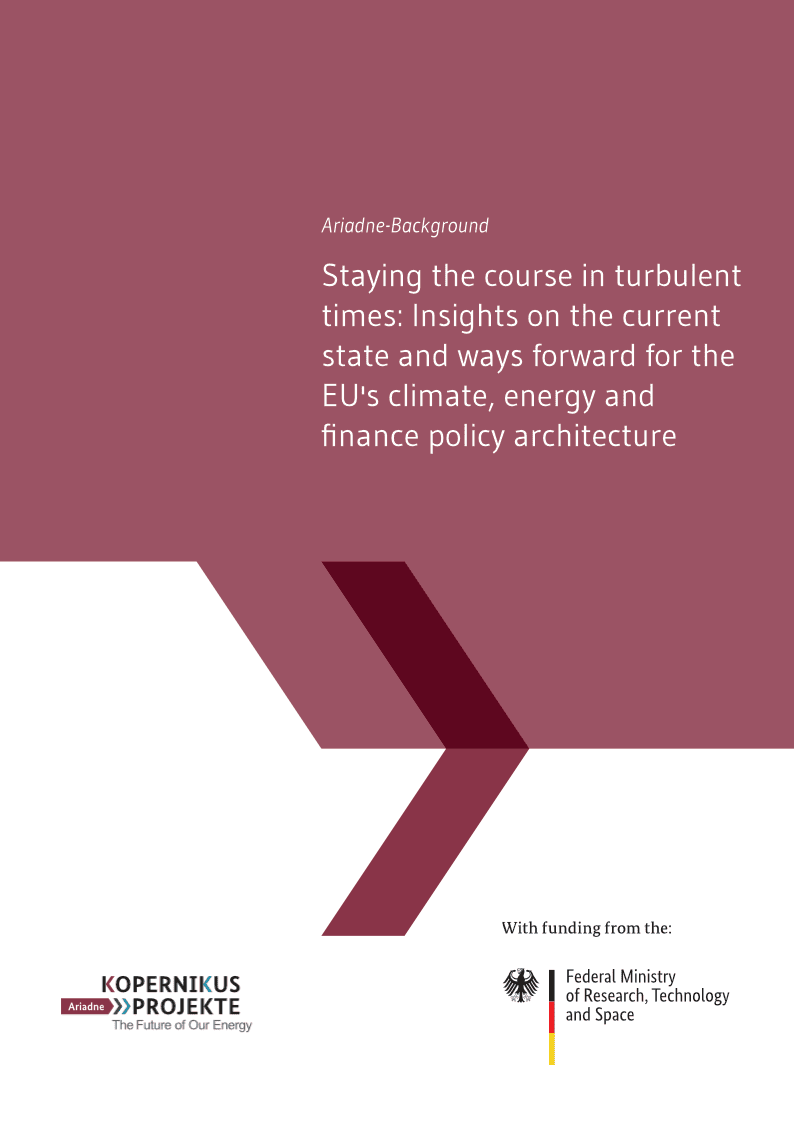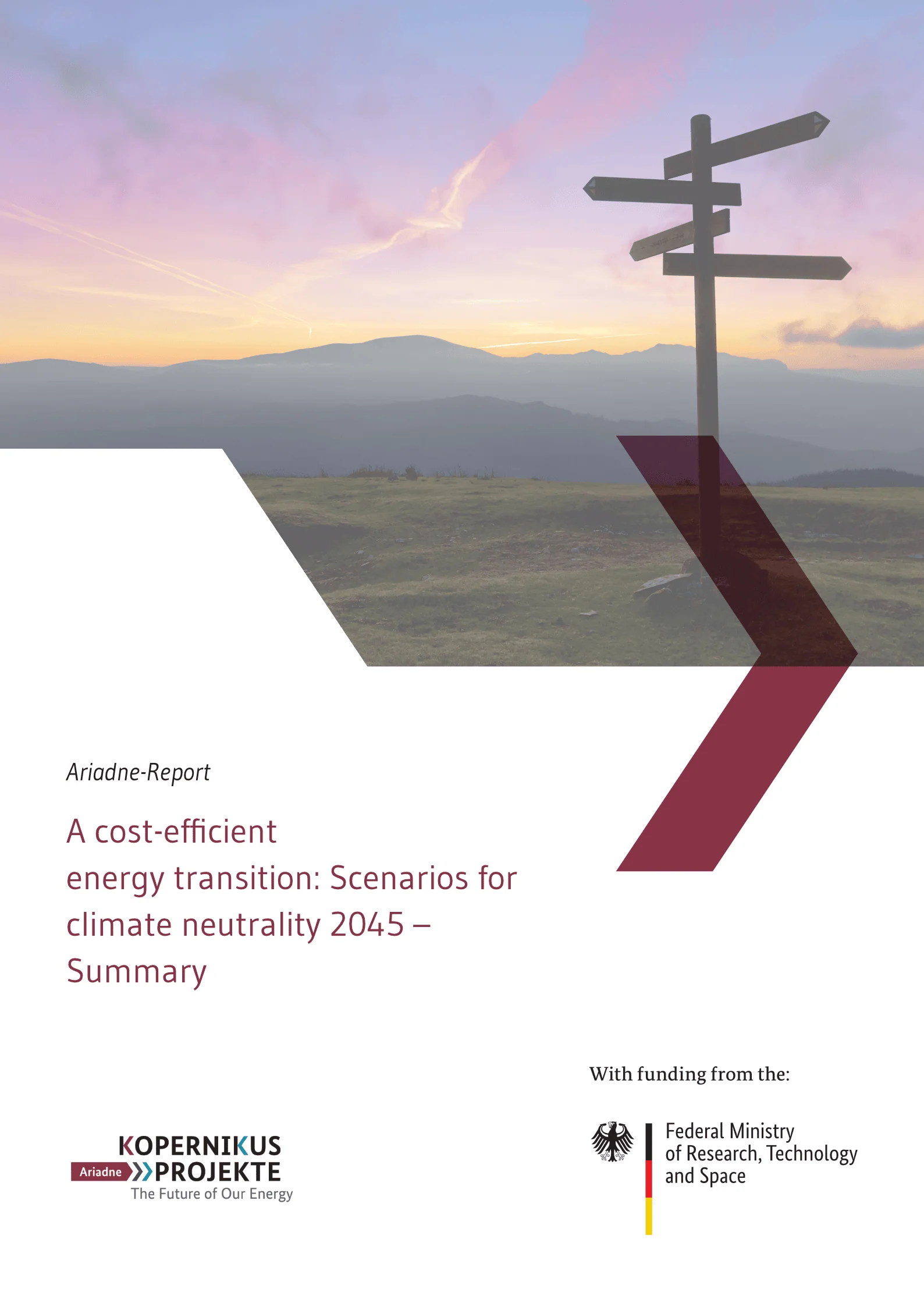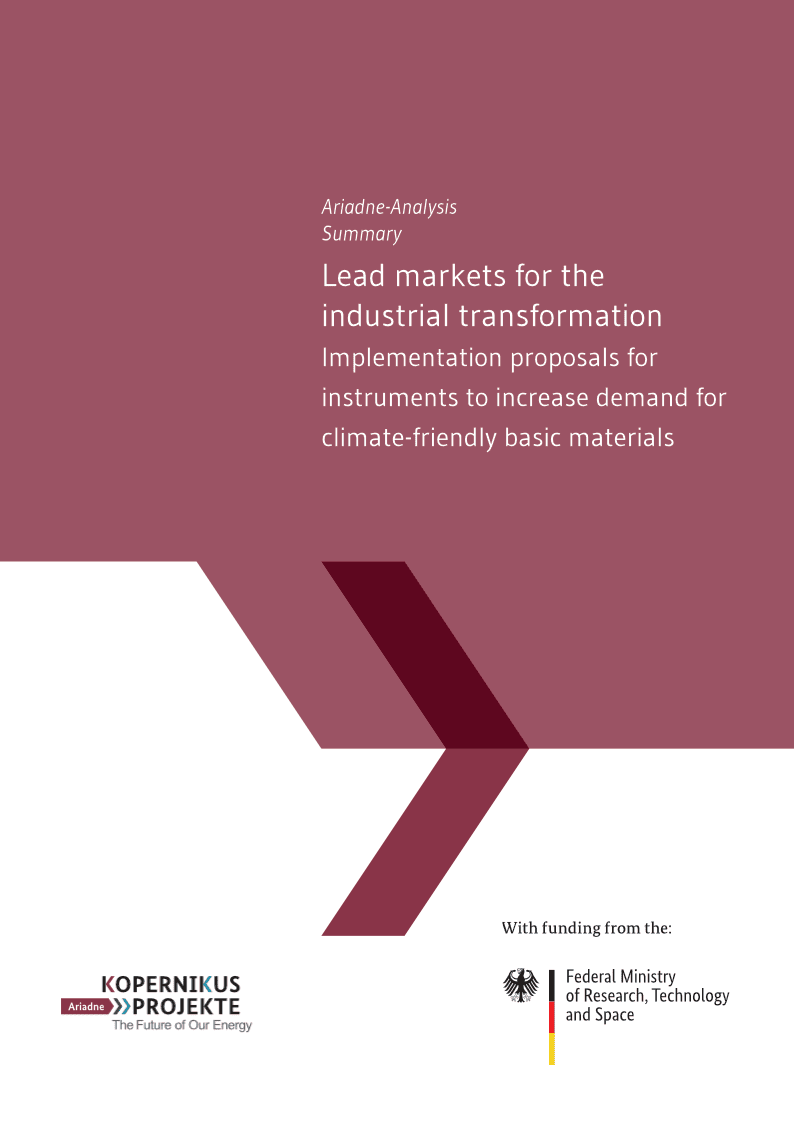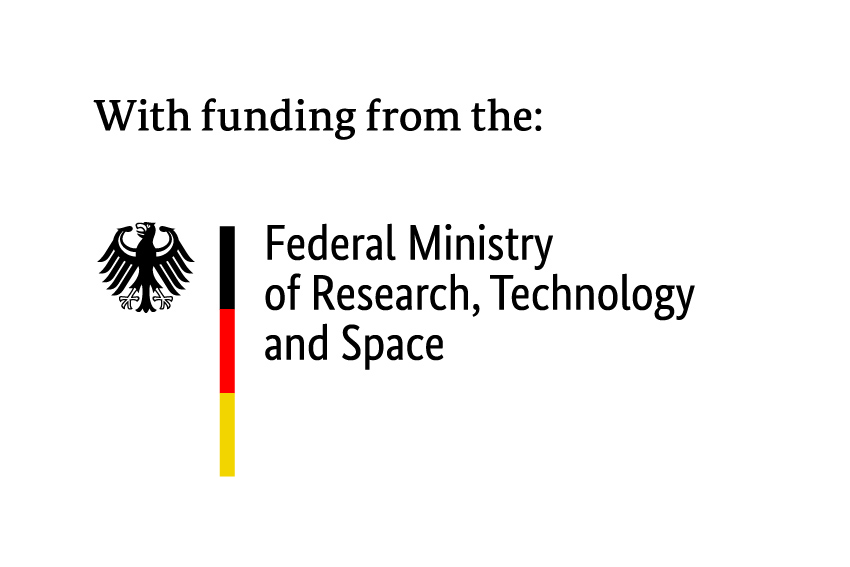 Adobe Stock/artjazz
Adobe Stock/artjazz New Ariadne paper highlights EU climate policy from 2030 onwards
The EU is in the midst of a debate on new climate targets for 2040 and how the competitiveness of industry can be linked to decarbonization. In a new background paper, Ariadne researchers analyze the historically evolved energy and ...

Background: Staying the course in turbulent times – Insights on the current state and ways forward for the EU’s climate, energy and finance policy architecture
With the Fit for 55-package, the EU increased the ambition level of its energy and climate targets for 2030. The targets reflect the EU’s commitment towards an energy system transformation - or, in fact, the transformation of the entire ...

Report: A cost-efficient energy transition: Scenarios for climate neutrality 2045 – Summary
Summary Climate change is not slowing down. In 2024, two significant records were set: for the first time, the global mean temperature exceeded +1.5 °C above pre-industrial levels (Copernicus Climate Change Service, 2024), and global CO2 emissions reached a new ...
 (c) Markus Spiske via unsplash
(c) Markus Spiske via unsplash New edition of Ariadne@Brussels launched: ‘EU climate and energy policy in a polarising world’
The Kopernikus project Ariadne invites you to this year’s edition of the Ariadne@Brussels workshop series. From 8 to 10 December 2025, researchers from the Ariadne project will present their latest findings on EU climate and energy policy and discuss ...

Analysis: Real-world Fuel Consumption and Potential Future Regulation of Plug-In Hybrid Electric Vehicles in Europe – An Empirical Analysis of about one Million Vehicles
Actual real-world fuel consumption of Plug-In Hybrid Electric Vehicle (PHEV) in Europe slightly increased to around 6.0 to 6.2 l/100 km between the registration years 2021 and 2023 for both gasoline and diesel PHEVs. At the same time, type-approval fuel ...
 Adobe Stock / OZTOCOOL
Adobe Stock / OZTOCOOL Role of hybrid vehicles in EU fleet mix questionable: very high CO2 emissions
A real-world consumption data from around 850,000 vehicles across Europe shows that PHEVs are rarely charged, the combustion engine is used too often, and even in mainly electric mode, fuel consumption is considerable.

Analysis: Lead markets for the industrial transformation – Implementation proposals for instruments to increase demand for climate-friendly basic materials (Summary)
Lead markets, in which climate-friendly basic materials are purchased despite higher costs due to their product property, can complement the existing policy mix for a competitive and climate-neutral industry.
 Pixel_B / Adobe Stock
Pixel_B / Adobe Stock CO2 pricing and subsidies alone are insufficient: Create lead markets for industrial transformation
In a new analysis, Ariadne researchers propose instruments to create lead markets for the emission-intensive basic materials cement, steel and ethylene.
 (c) Markus Spiske via unsplash
(c) Markus Spiske via unsplash Ariadne@Brussels 2025: Insights into the conference ‘EU climate and energy policy in a polarising world’
This years iteration of the Ariadne@Brussels workshop series took place in Brussels EU Quarter from 8 to 10 December 2025. Researchers from the Ariadne project presented their latest findings on EU climate and energy policy and discussed them in ...


